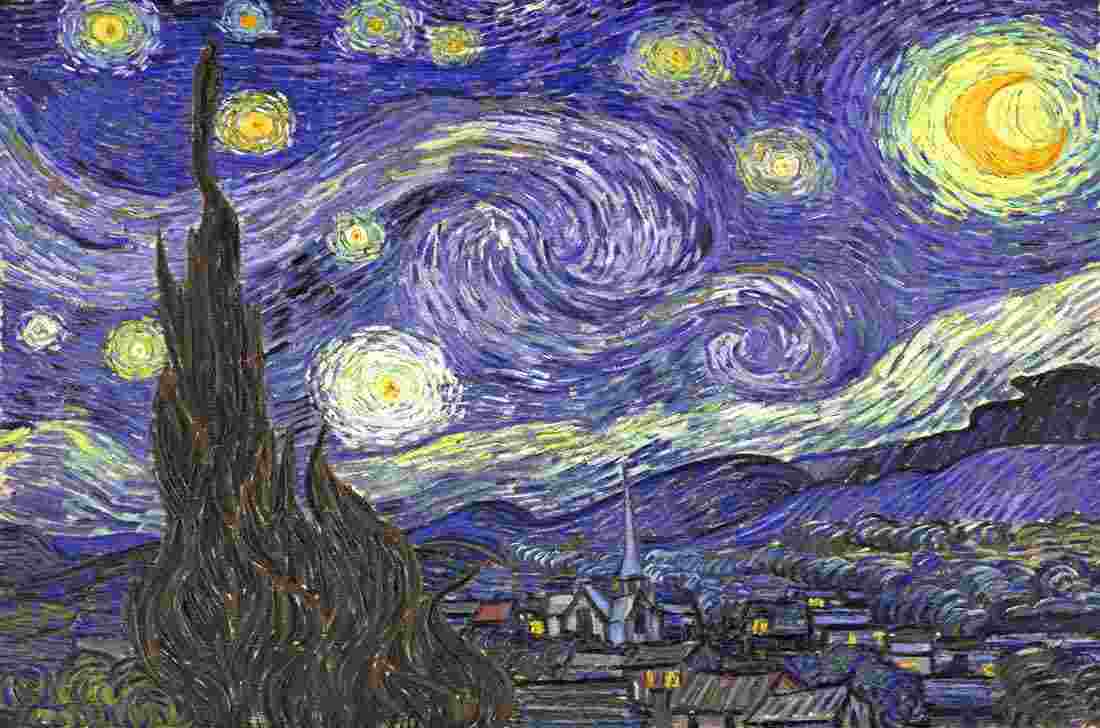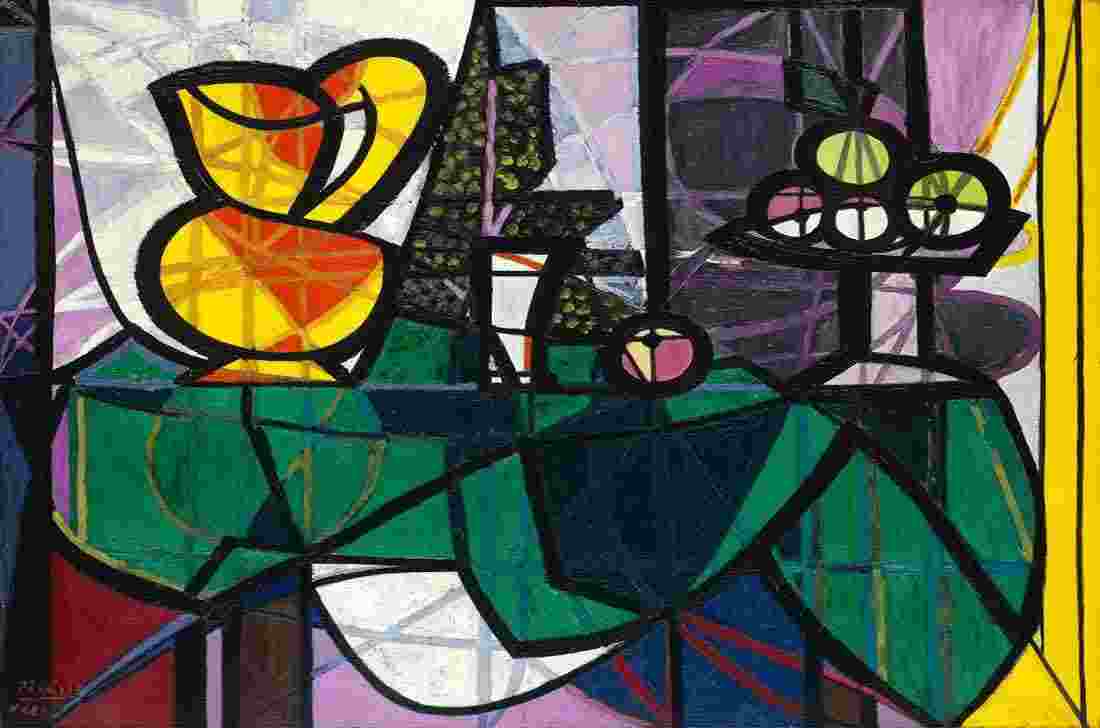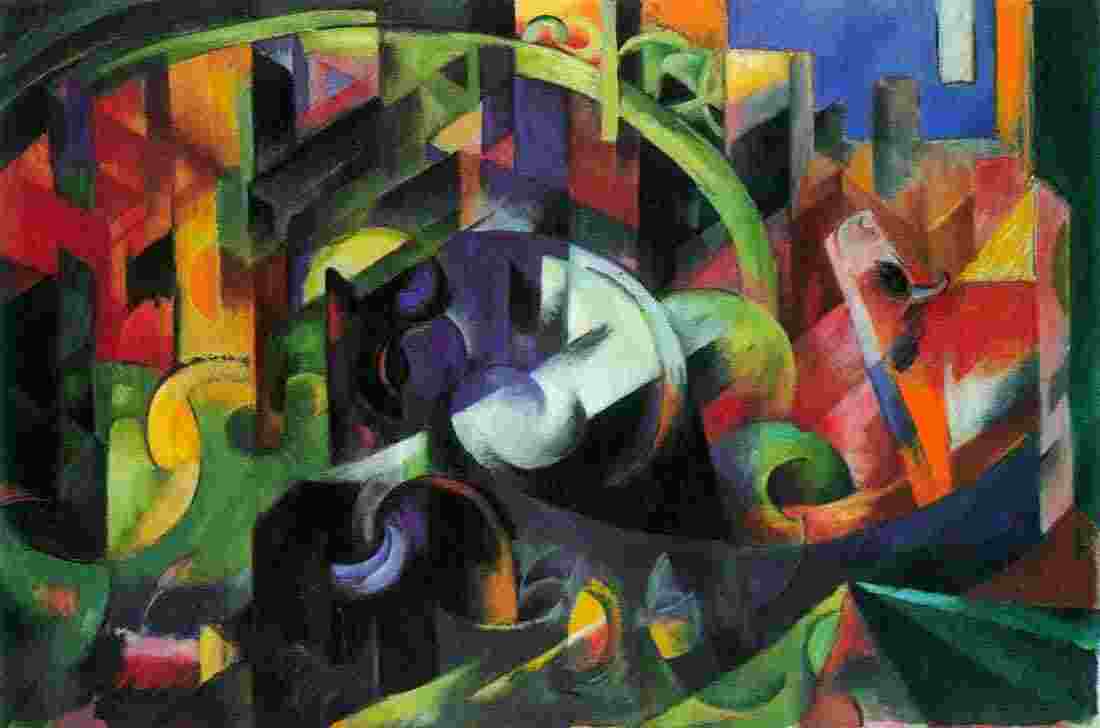Fourth Grade Art Lesson 12
Looking at a Rose Window, Part 1 Cutting Out the Shapes
Objective:
The student will look at the rose window designed by and built by Jehan de Chelles (Zhon duh Shell) for the Cathedral of Notre Dame. The student will understand by the example what radial balance is. The student will cut out a skeleton for making their own rose window design.
Materials:
2 black sheets of construction paper per student, a sharp pair of scissors, a paper plate
Procedure:
Look at the window called a rose window that is in the Cathedral of Notre Dame in Paris. It is a stained glass window designed and built by Jehan de Chelles (Zhon duh Shell). It is 43' in diameter, which is enormous for the type of workmanship and detail it carries. The inscription beneath the window, on the inside of the cathedral reads: In the year of our Lord 1257, on Tuesday, February 12, this work was begun in honor of the Mother of Christ, during the lifetime of Jehan de Chelles, Master Mason. This window is filled with pictures that tell stories of biblical history. Notice how the design is built around a center circle. Everything radiates from that central area. This is called radial balance. There are many things in nature designed with a radial balance such as a flower, a spider web or the cross section of a tree. Can you think of anything that has radial balance. Today we are going to make our own rose window. Instead of using lead and glass we will use construction paper and tissue paper. Take a paper plate and trace around the edge of it onto one of your black pieces of construction paper. With both pieces stacked together, cut around the edge of the circle you have drawn. (Cut two circles with the one cut). Next, take one of the circles and fold it half, fold it in half again and finally fold it a third time. You should now have a triangle. We are going to cut the edges of the triangle to make decorative openings in the circle. (It is very much like cutting snowflakes.)You must be careful how you cut your shapes. If you cut all the way along either of the long edges you will no longer have a circle, the whole thing will come apart. Instead, cut out shapes that are relatively small. Begin on the edge and cut inward toward the center of the triangle. On your next shape, you must move at least a half an inch away from where you cut the top edge of your last cut. This will create the lines that connect the shapes and they need to be wide enough for you to glue your tissue paper down. Continue moving up the one side and then down the other cutting shapes inward toward the center of the triangle. You may want to unfold the circle after you cut to get an idea of how you are doing. Continue this process until you have enough shapes to make your circle look filled. When you have done this, take your second circle and fold it the same way you did the first one. Trace off the cuts you made in the first circle onto the second circle and cut them out. When both of your circles look the same put your name on them and store them in a safe place. In our nrxt lesson we will add the color tissue paper to them.
Conclusion:
Who designed and built the rose window in the Cathedral of Notre Dame? What kind of balance is used for this window? What kind of balance does a typical house window have? Look around for radial balance in things around your world.
Artwork and Examples used in this lesson
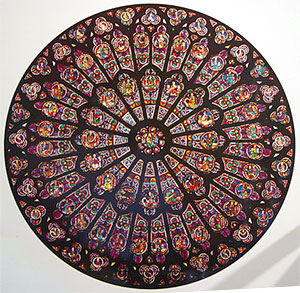
Jehan de Chelles, Rose Window
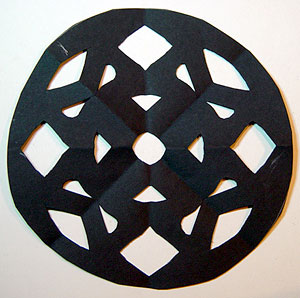
Teacher Example Rose Window Cut out
